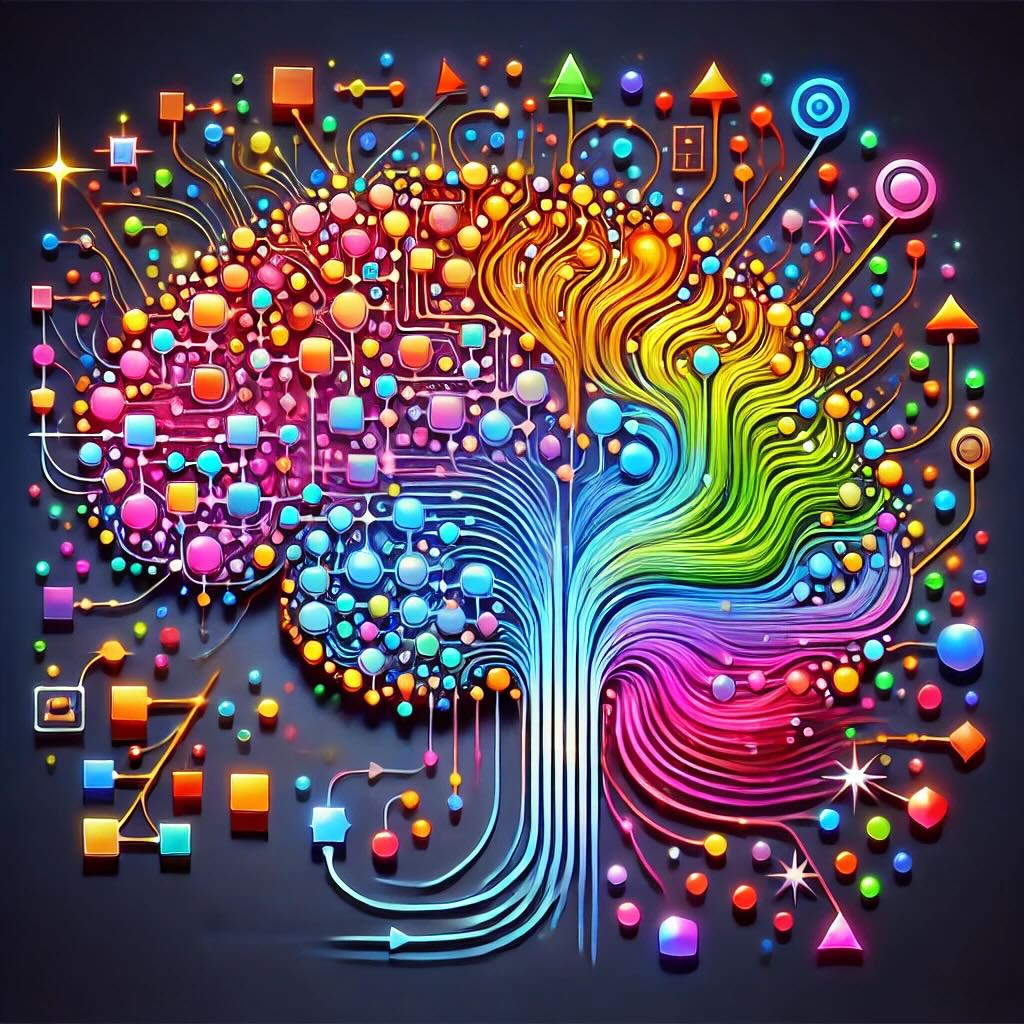Vital AI Agent Ecosystem
Build, Deploy, & Manage AI Agents.
Open Source via GitHub
The Vital AI Agent Ecosystem is available via an open-source license from our GitHub repository: vital-agent-ecosystemManaged Service
Vital can operate an instance of the Ecosystem on behalf of your organization, customized as per your needs and integrated with your IT Infrastructure.Deploy Agents in Chat.ai
Agents can be deployed in our Chat.ai application and used privately or open to all Chat.ai users.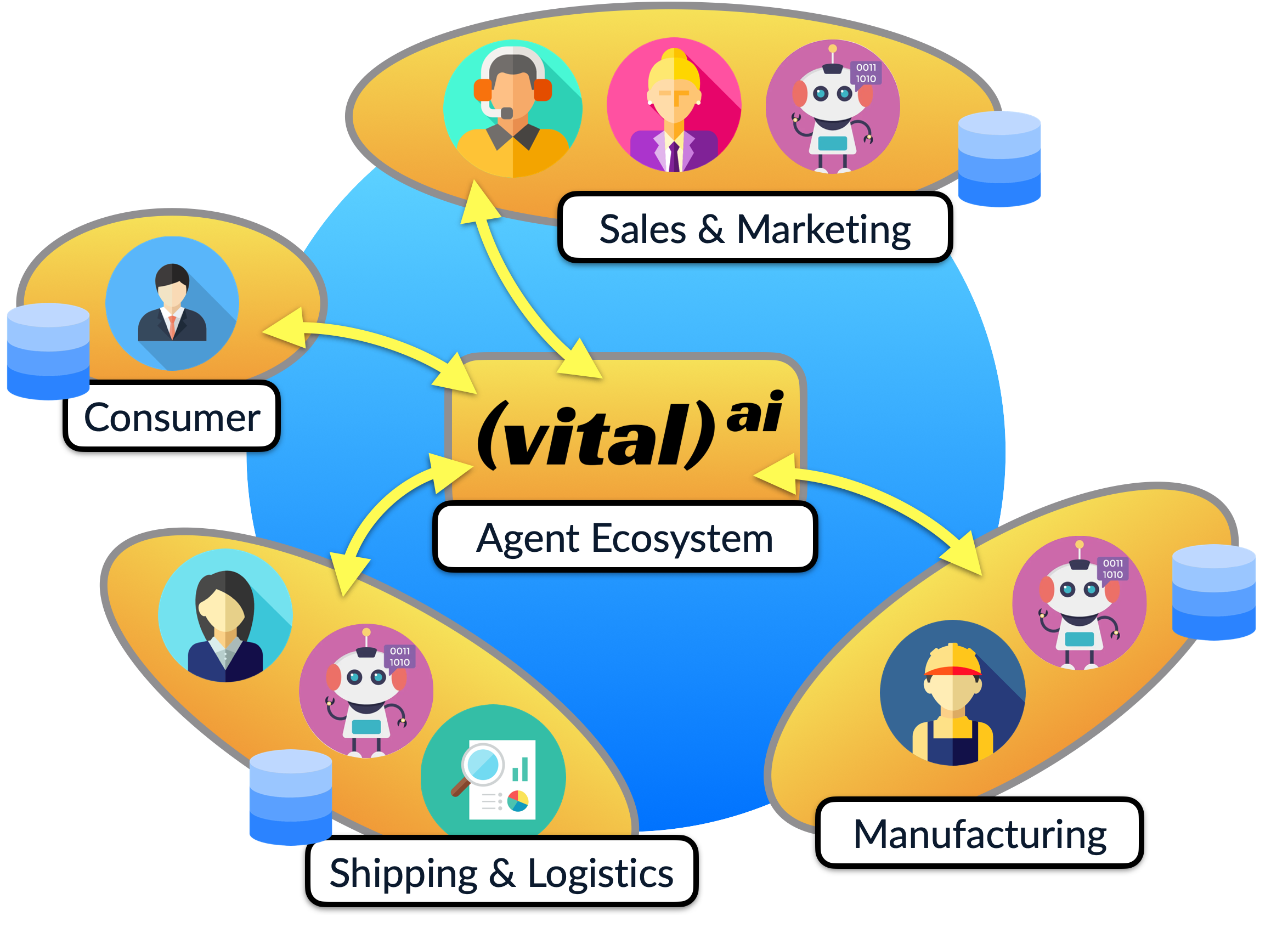
An Agent Ecosystem for your Organization
The A.I. Agent Ecosystem is partitioned into separate Accounts, with each Account having its own Agents, Databases, Users, and other resources. Agents in an Account may communicate with other Agents in the same Account or with Agents in another Account. All communication occurs over channels which are subject to guardrails and access control.
Vital AI Agent Ecosystem Architecture
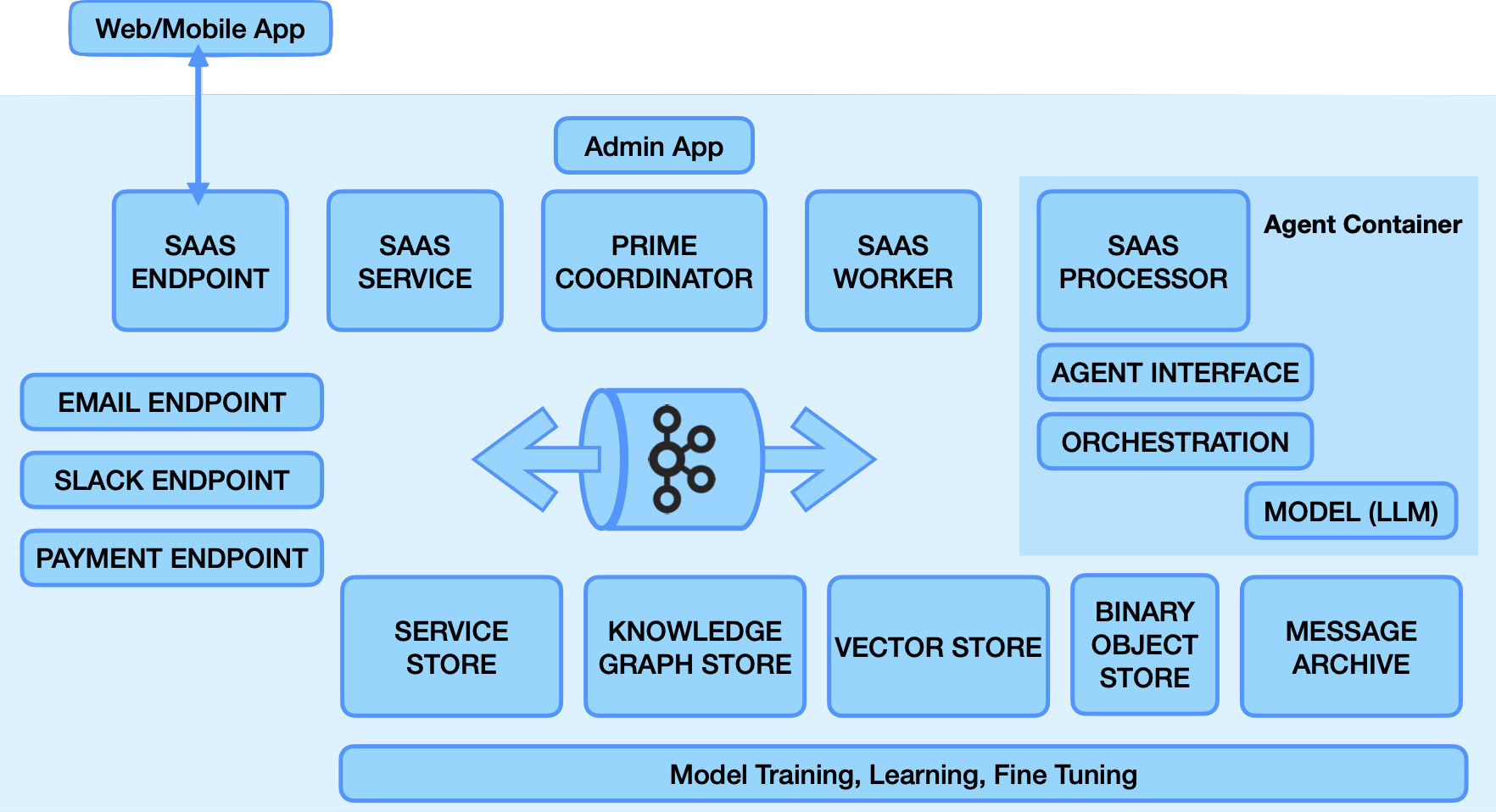
The Vital AI Agent Ecosystem is implemented by an architecture consisting of several layers. The "Endpoint" layer implements the API and integrations with external services such as Email. A "SaaS" layer distributes work over a scalable set of Workers. The "Data" layer provides access to databases. The "Training" layer implements training models. And, the "Agent" layer manages Agent implementations in containers.
Websocket API
The A.I. Agent Ecosystem is accessed via a websocket-based client API. Client libraries are currently available in JavaScript, Python, Java, and Groovy. Any language supporting websockets could be used.
AIMP & Channels
The Ecosystem uses Messages defined in the Artificial Intelligence Messaging Protocol (AIMP). All messages are transmitted over Channels. An Agent may be deployed on Channels, and send messages over Channels. Agents deployed on a Channel receive and process messages sent to the Channel.
Kafka & Horizontal Scaling
At the heart of the A.I. Agent Ecosystem is a message queue implemented by a Kafka Cluster. Ecosystem components are producers of messages and consumers of messages. The Ecosystem can be horizontally scaled by increasing the number of producers and consumers across the different component roles.
Agent Containers
Agents are deployed in the Ecosystem in containers providing process isolation.
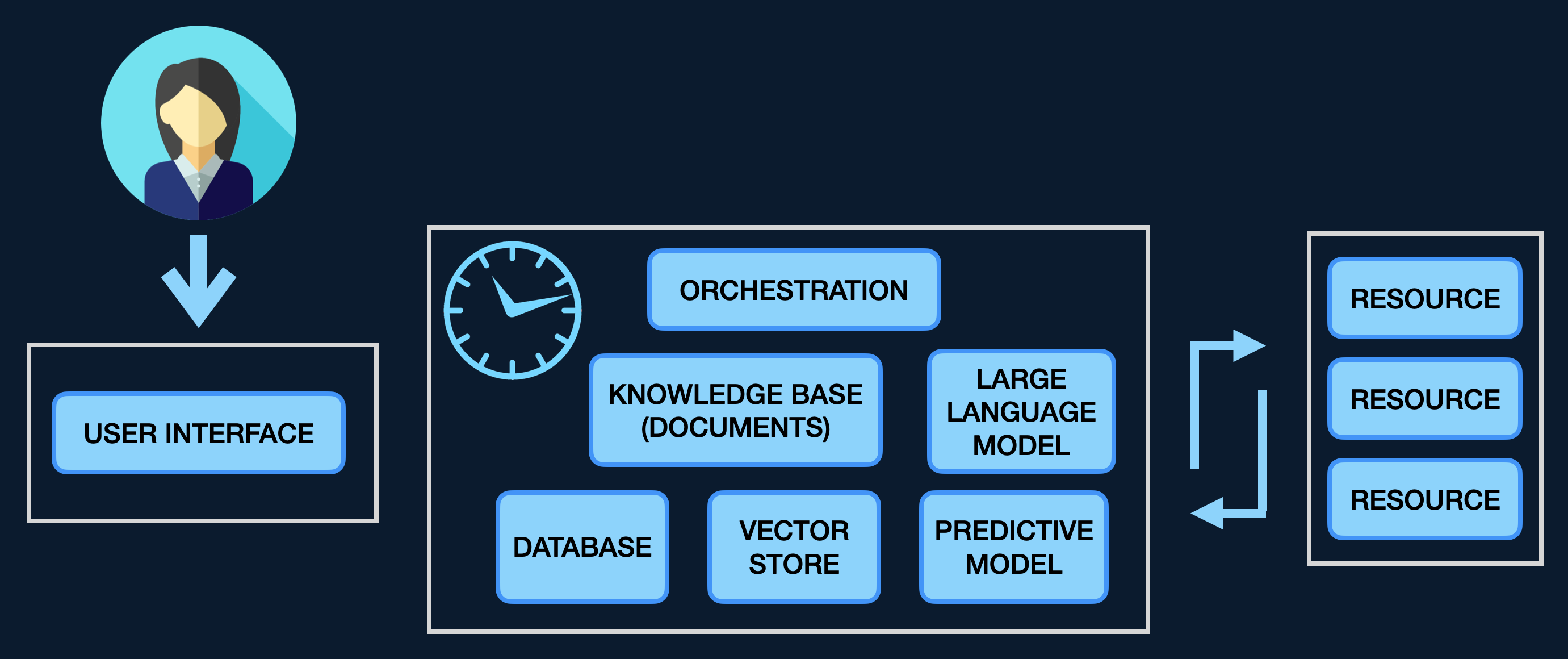
Containerized Agent Implementations
Agents are deployed within containers and are provided an interface to interact with the rest of the Ecosystem. This interface allows querying the Knowledge Graph via Vector Database queries, utilizing Large Language Models, and accessing external services, such as sending outgoing emails. Within the container, the Agent implementation may be implemented in languages such as Python and Java, and may utilize libraries such as AutoGen, LangChain, and Semantic Kernel, without restriction. The Ecosystem can specify system resources to dedicate to the Agent containers to deploy enough container instances to meet demand.
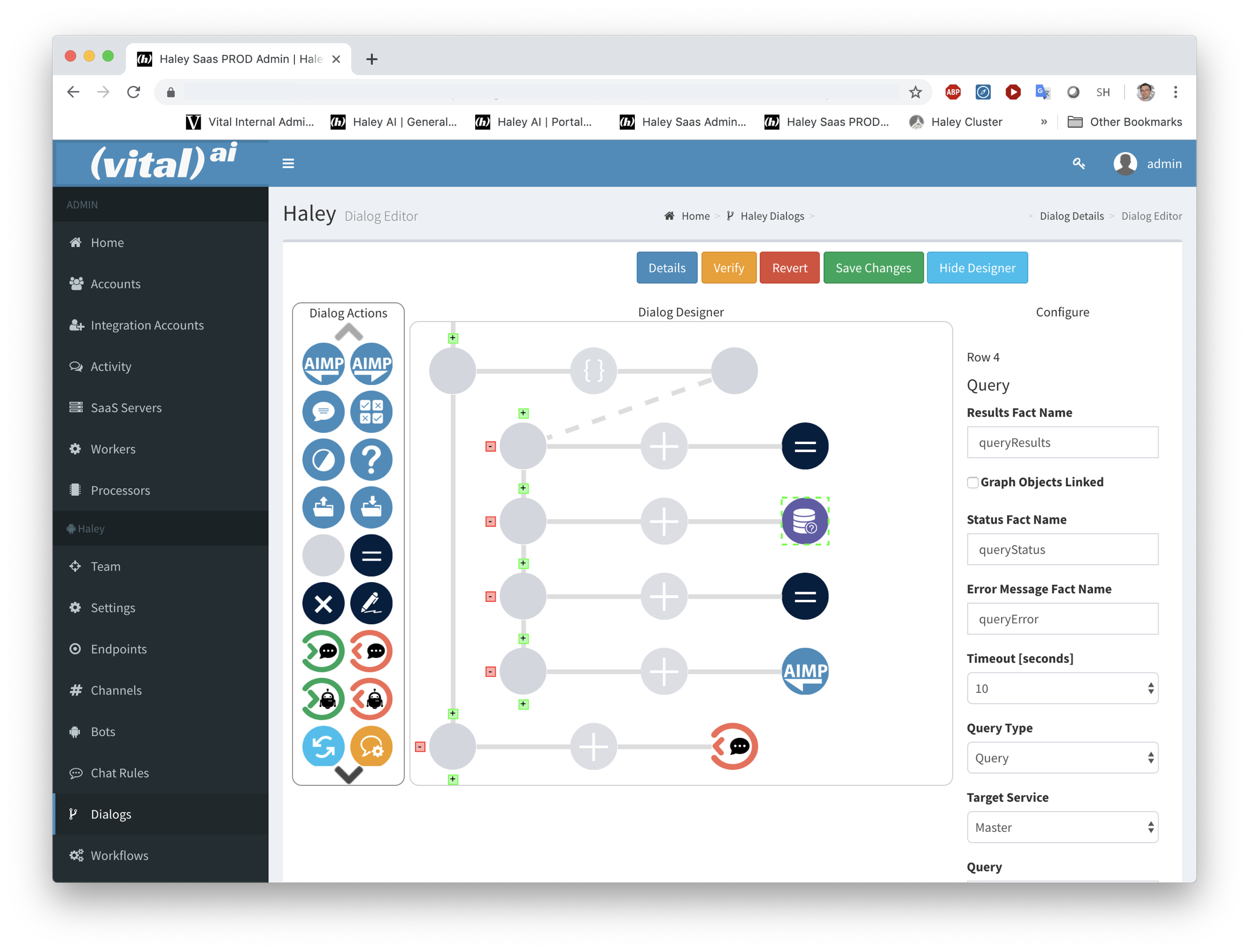
Deploy Agents in Workflows
Agents are deployed in the Ecosystem on Channels using Workflows. Workflows are composed using a Low/No-Code tool in the Ecosystem Admin Web Interface. Workflows provide a means to process incoming and outgoing messages and insert logic, data governance, guardrails, and access control around the Agent implementations.
Ensemble Reasoning
Ensemble Reasoning is a new methodology to join LLMs that Reason with an ensemble of modules that can further the reasoning process. These modules include other supporting LLMs, machine learning models (like GNNs), Knowledge Graph Query services, and others. Ensemble Reasoning dramatically improves A.I. Agents in speed, cost, and capability by moving much of "tool use" into the reasoning process of the LLM.
VitalSigns for Knowledge Modeling in Knowledge Graphs
VitalSigns provides a core Knowledge Model defining "Node", "Edge", and other low level fundamental elements of a Knowledge Graph. A Vital Knowledge Model extends the Core Knowledge Model to define general concepts such as "Document", "Account", and "Person". This Knowledge Model is further extended by other models including AIMP (Artifical Intelligence Messaging Protocol) which adds objects representing messages between Agents. An Agent implementation may extend this further with additional models that define domain specific concepts. As example, if an Agent was developed to recommend movies, a domain model for the Agent may include concepts like "Actor", "Genre", and "Film". Tools such as VitalSigns help to mange such domain models and convert them into code artifacts.
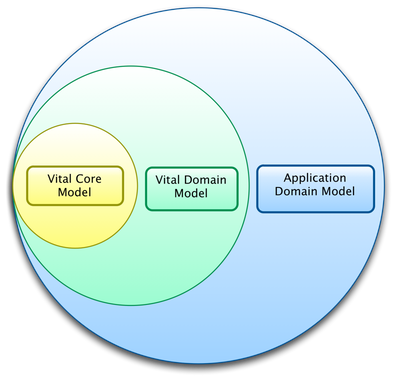
Data in A.I. Agents
The Vital AI Agent Ecosystem enables using Data to implement Agents in unique ways.
Fine Tuning & Prompt Engineering
The standardized data model enables data to be re-used and re-purposed across different Agents, models, and across Fine Tuning and Prompt Engineering.
Guardrails & Data Governance
By Agents adhering to AIMP, Guardrails and Data Governance can be applied to AIMP messages equally across all Agents over the whole Ecosystem, including protocols to handle Personally Identifiable Information and other compliance requirements.
Agent Collaboration
With the standardized AIMP messaging protocol, Agents can communicate with each other, enabling Agent Collaboration across the Enterprise.
Message Archive & Model Training
The historical message archive can be used to train and improve models incrementally.
